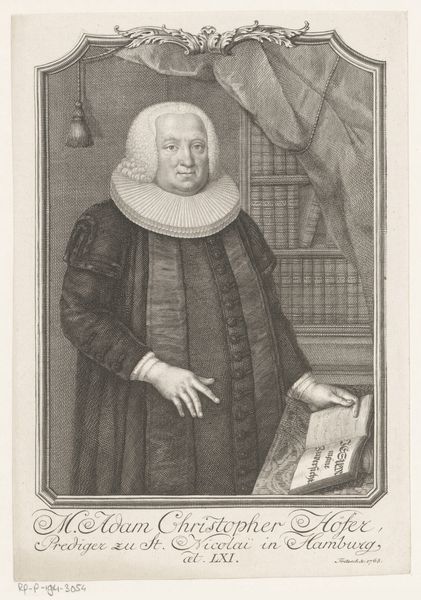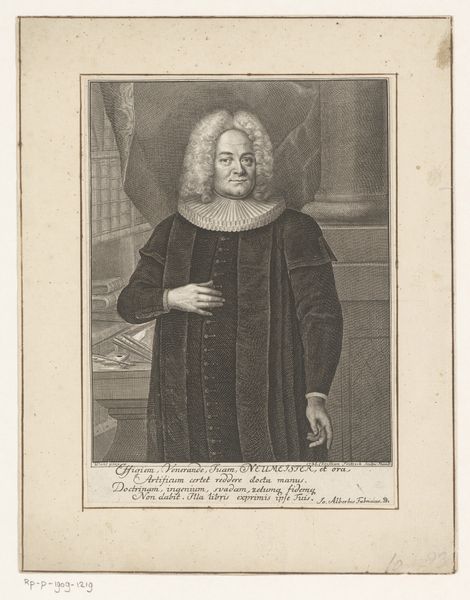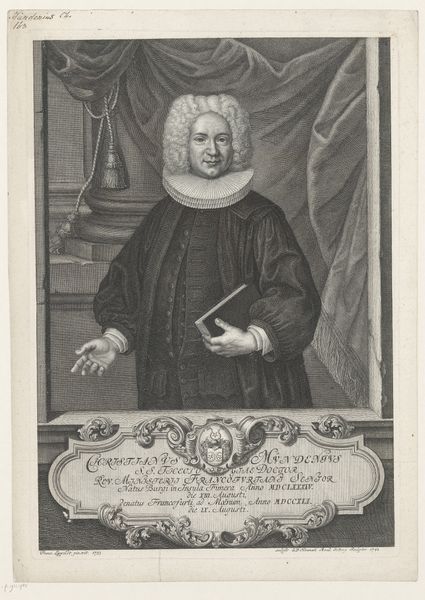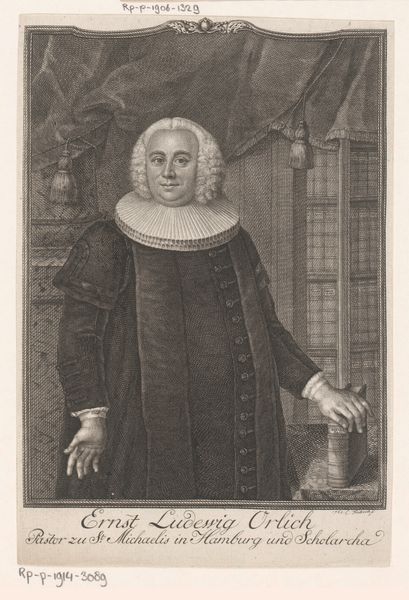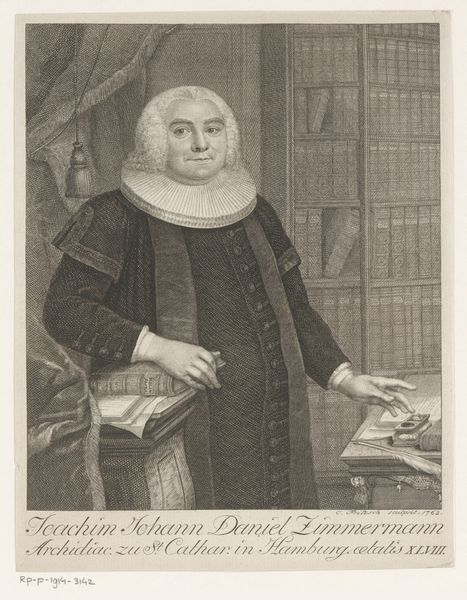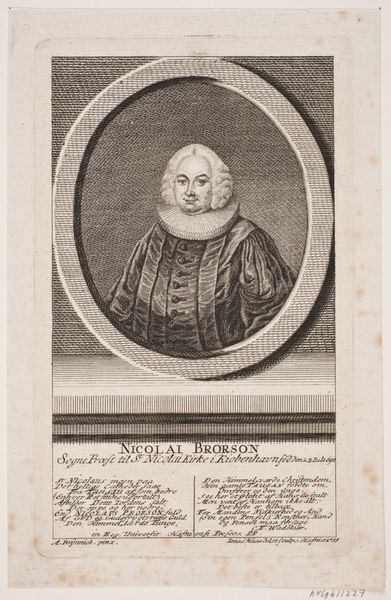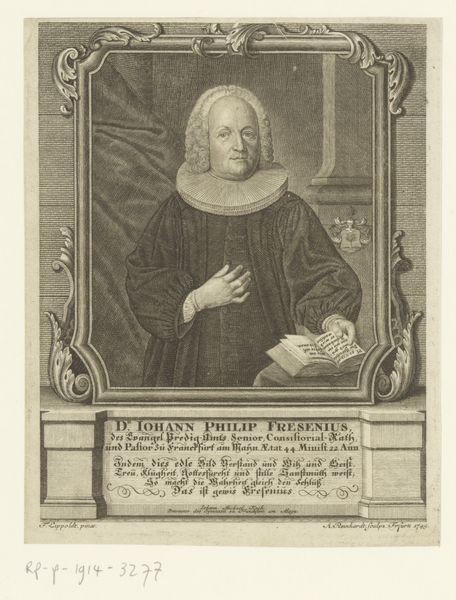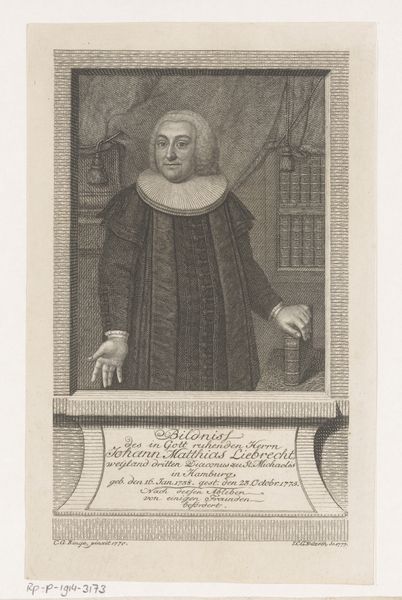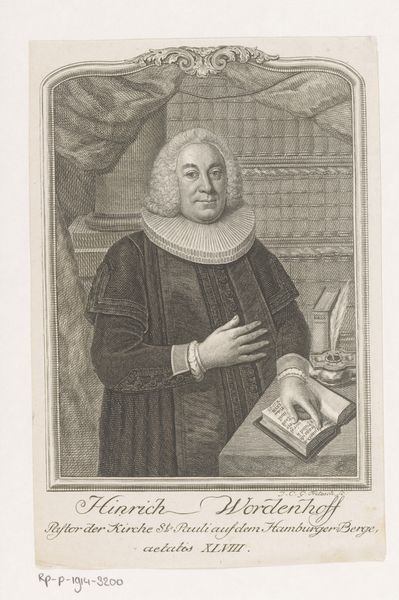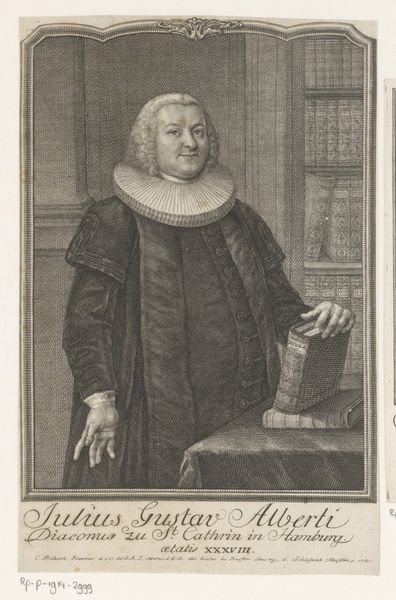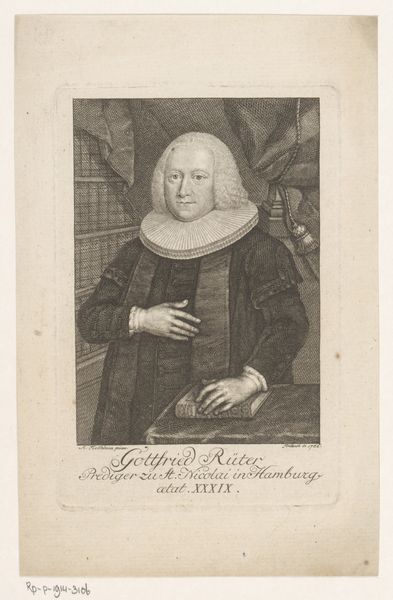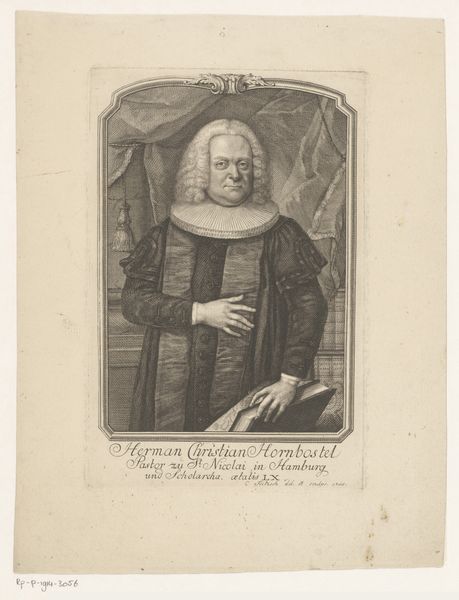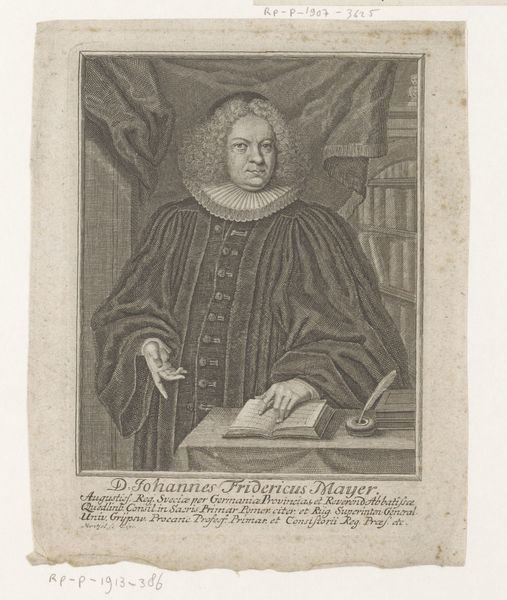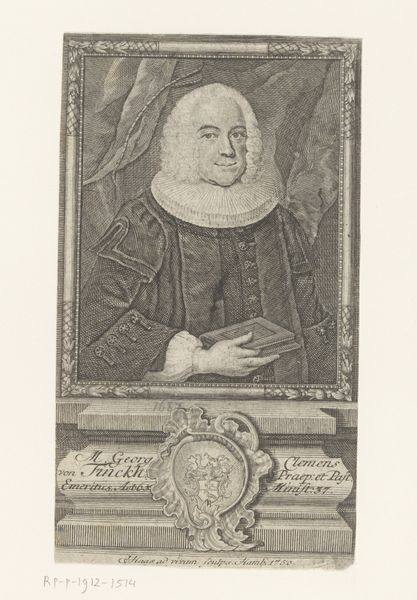
print, etching, intaglio, engraving
#
16_19th-century
#
baroque
# print
#
etching
#
intaglio
#
old engraving style
#
19th century
#
history-painting
#
engraving
Dimensions: height 205 mm, width 139 mm
Copyright: Rijks Museum: Open Domain
Editor: Here we have Christian Fritzsch's "Portret van Friedrich Wagner op 65-jarige leeftijd," an etching from 1757, housed at the Rijksmuseum. I’m immediately struck by how this formal portrait gives us a glimpse into the world of 18th-century intellectualism. How do you see this piece? Curator: What strikes me most is how this image encapsulates the construction of identity within a specific historical and social context. Consider the symbols of status embedded in this baroque print. Wagner's attire and the detailed interior signal education and authority but how complicit is he in projecting a constructed version of masculinity and power? What performative aspects do you notice, considering gender studies? Editor: The wig, definitely. It seems less about individuality and more about adhering to societal expectations. It is interesting that we see mostly men depicted in the wig. Curator: Exactly. The wig wasn't just a fashion statement; it was a potent symbol of power and social standing and, access to judicial systems in this period. Its adoption, or rejection, by different groups becomes a silent, visual commentary on social and political dynamics of gender. Who gets to wear the wig, metaphorically? How did societal norms reinforce the status quo and whose voices were marginalized? Editor: So, beyond just a portrait of an individual, we are seeing an artifact that speaks to the complexities of power, gender and social structures of the time. It challenges us to think about representation critically. Curator: Precisely. By engaging with the art’s historical, social and theoretical contexts, we start to unearth those hidden conversations that these pieces silently, and often unintentionally, provoke. It really transforms how we view them. Editor: I'm starting to see how just describing what is depicted falls short, and how understanding the work’s context opens up a much richer interpretation. Thank you for opening my eyes.
Comments
No comments
Be the first to comment and join the conversation on the ultimate creative platform.
